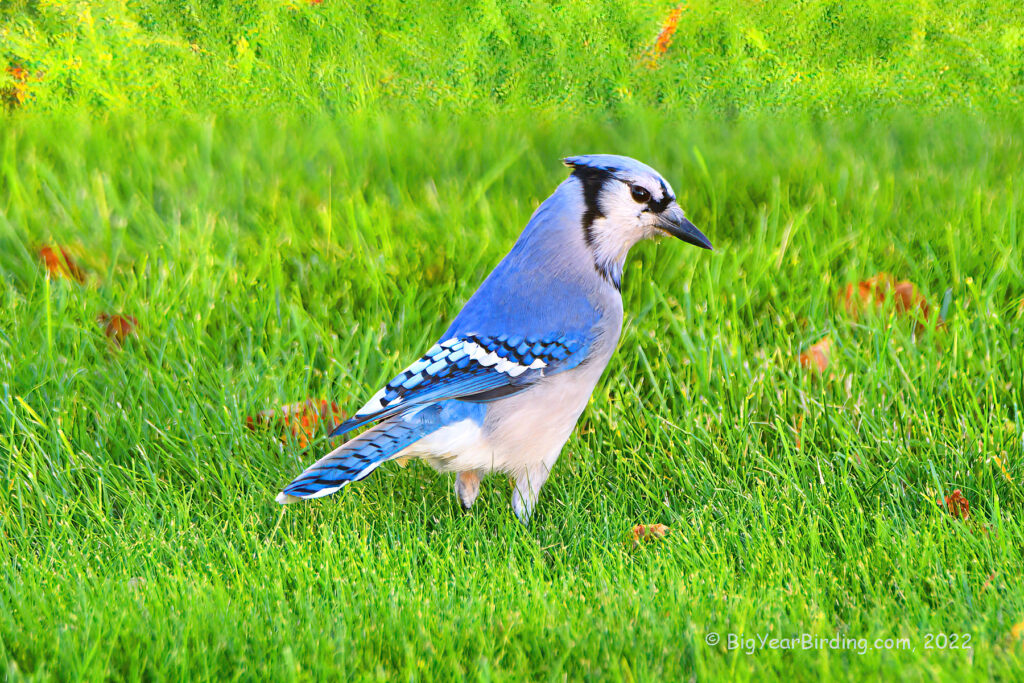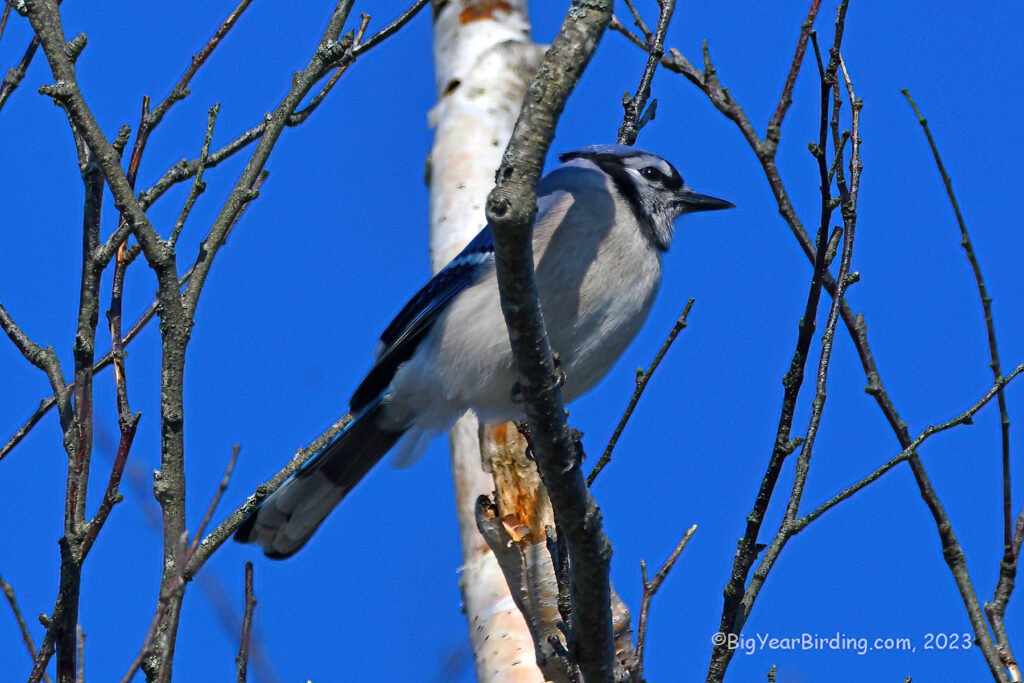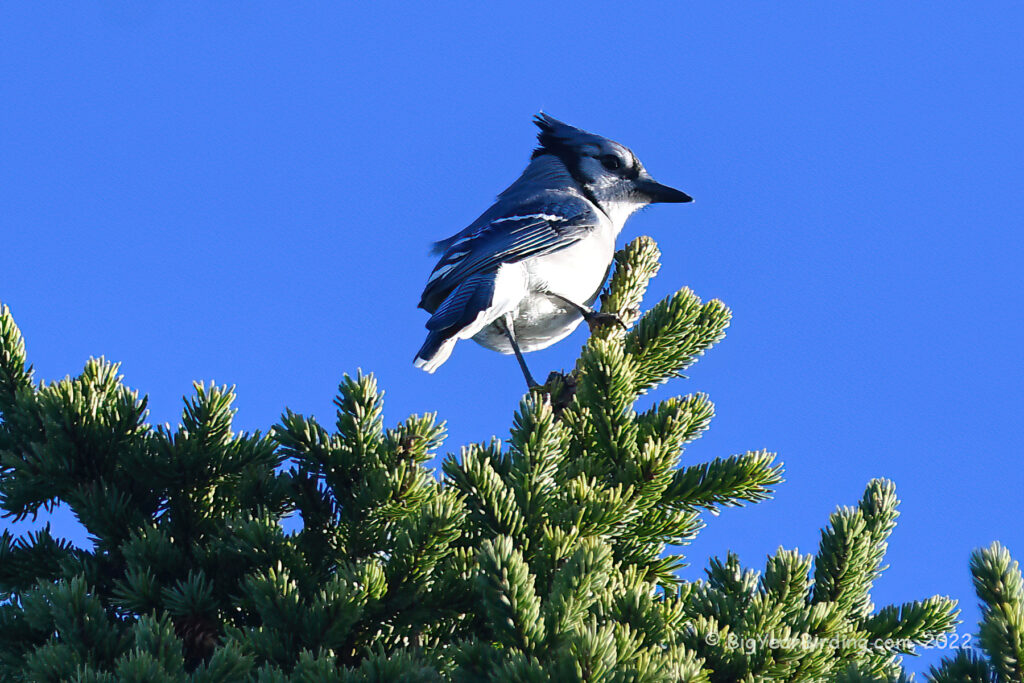
The Blue Jay (Cyanocitta cristata) is a medium-sized songbird found throughout North America. Adults are typically 9-12 inches in length, with a wingspan of 13-17 inches, and weigh between 2.5-3.5 ounces. Males and females look similar, with bright blue feathers on their head, wings, and tail, and a distinctive black “necklace” that sets them apart from other blue birds. They also have a crest on their head that they can raise and lower depending on their mood.

Blue Jays are year-round residents in most of their range, although some birds from the northern parts of the range will migrate south during the winter months. Those that do migrate are often found in southern states, where they can be seen in small flocks. During migration, they may also be seen in other parts of the United States and even in Canada, depending on the severity of the winter.
One of the most recognizable characteristics of Blue Jays is their vocalizations. They have a wide variety of calls, including a harsh “jay-jay” and a soft, musical “whisper song.” They are also known to imitate the calls of other birds and animals, such as hawks and cats. Blue Jays are intelligent birds and have been observed using tools, such as using their beaks to pry open acorns.
In addition to their distinctive vocalizations and behaviors, Blue Jays are also known for their aggressive behavior, particularly when defending their territory or young. They have been known to attack other birds, animals, and even humans if they feel threatened. Despite this, Blue Jays are a popular bird to observe and can often be seen at backyard bird feeders.

Overall, the Blue Jay is a striking and interesting bird, with its bright blue plumage, distinctive calls, and unique behaviors. While they may be territorial and aggressive at times, they are also intelligent and fascinating to watch. Whether seen in a backyard or on a migration route, the Blue Jay is a bird that is sure to capture the attention of any bird enthusiast.

